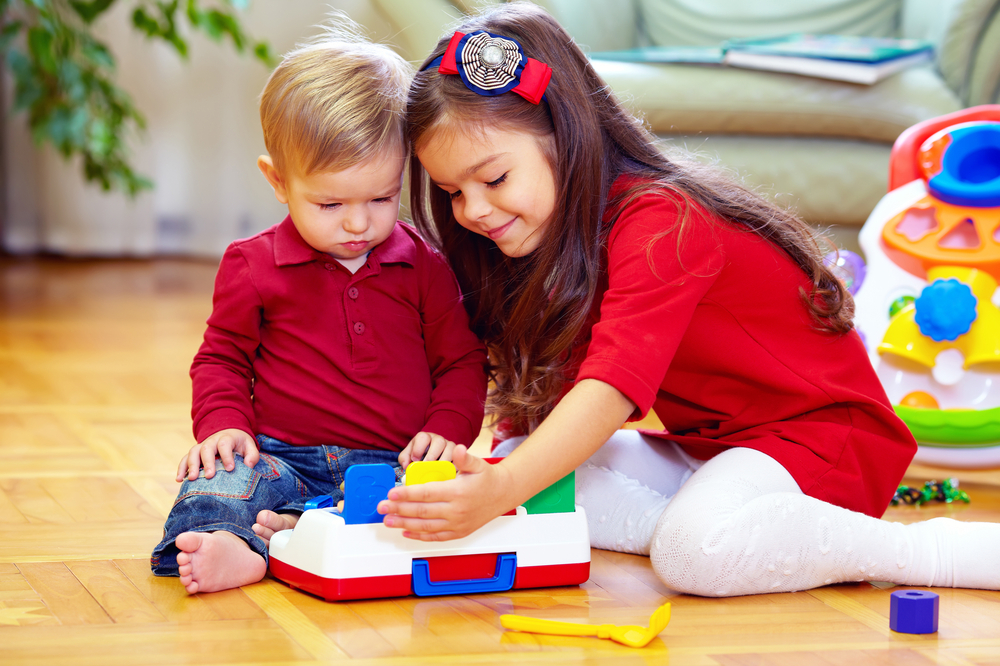Most of the time, we are concerned that our children aren’t empathetic enough. But sometimes parents worry their child is “too empathetic.”
What is Empathy?
Empathy, at its most basic level, is the ability to tune into another person’s pain. Empathy is the foundation for kindness and helping behaviors.
Empathy requires the cognitive ability to take another person’s perspective. Although this ability to shift perspective usually doesn’t develop until the preschool years, even infants respond to distress in others, and toddlers make attempts to try to help those they see are upset.
Can You Be Too Empathetic?
When a child takes on someone’s pain as their own and allows those feelings to subvert their own needs, it might be necessary to intervene. Teaching a child how to stand up for themselves (in an empathetic way!) is just as important as teaching empathy.
Being assertive isn’t the same as being aggressive.
When we are assertive, we are confident in expressing our desires and needs, but also understand that other’s needs have equal importance. Aggression is imposing our desires and needs onto others.
Sibling or Friend Power Imbalance: when one child gives in to the other all the time

Training one child to be more assertive may also mean training the other to be more empathetic. Sometimes younger siblings “give in” to older siblings or other children because they are afraid of not being liked. The teaching point here is that someone can be irritated with another person, but that doesn’t mean they don’t still love you. The younger sibling, or less dominant friend, may need support in feeling safe during these bouts of irritation, including help brainstorming another way to play.
Children whose temperament leans towards being the “peacekeeper,” may need added practice controlling anxiety. The worry that others won’t like them can sometimes create a passive aggressive stance where the unmet self-need simmers inside and explodes in misplaced anger.
What Do the Experts Say?
Teaching assertive behavior to young children (and differentiating from aggression) comes primarily from role-modeling and coaching.
Consider incorporating a weekly “Family Meeting” where each person shares highs and lows or “good and bad news.” The rule is you can’t use this to tattle on another. But it teaches children in a safe way that it’s ok to have sad and angry feelings and express them in a loving environment. You can also encourage the family to show support and care when someone expresses “bad news” and celebrate each other’s good news. Some people are uncomfortable with the term “bad news,” but this term resonates with children. If you are uncomfortable using the term in your family, try “highs and lows” instead of “good news, bad news.”
Teaching assertiveness characteristics: these can be practiced in a mirror. For a young child, you may need to coach them in the moment rather than practice ahead of time.
- Make eye contact
- Use a calm but firm and confident voice (practice saying, for example: “I don’t want to play house with you. I want to paint. Do you want to paint with me?” OR–”I’m using this right now. You can have it when I’m done.”)
- Use a confident stance (Shoulders back, head held high).
- Respect rights of self and others
Sibling Research
There are fancy research terms for all this, like “firstborn dominant”, “equal” or “second-born dominant.”
Typically, the firstborn sibling is dominant until adolescence, when the relationship becomes more equal. The power of the firstborn lessens as the second born achieves a more equitable status.
Some research also suggests that the power differential is more likely when there are four or more years between the siblings. There is some indication that the firstborn retains some power during the adolescent years, even as the relationship becomes more equal. (Some research also suggests that siblings of the same gender may be more likely to retain a power imbalance as they attempt to establish their place in the family. But there is a lot of contradictory evidence about this in the studies).
The Bottom Line
Teaching empathy and teaching assertiveness are two sides of the same coin. As children explore the world and become more involved in their school communities, the lessons they learn about these characteristics can translate into how they deal with bullying. Teaching empathy and assertiveness skills can help your child stand up to a bully and not be a victim. This can also help children be active rather than passive bystanders when observing bullying of others.
Want Additional Ideas?
If you want additional ideas or prefer to discuss this issue with a parent coach, call Parent Trust’s Family Help Line at 1-800-932-4673
© Parent Trust for Washington Children
